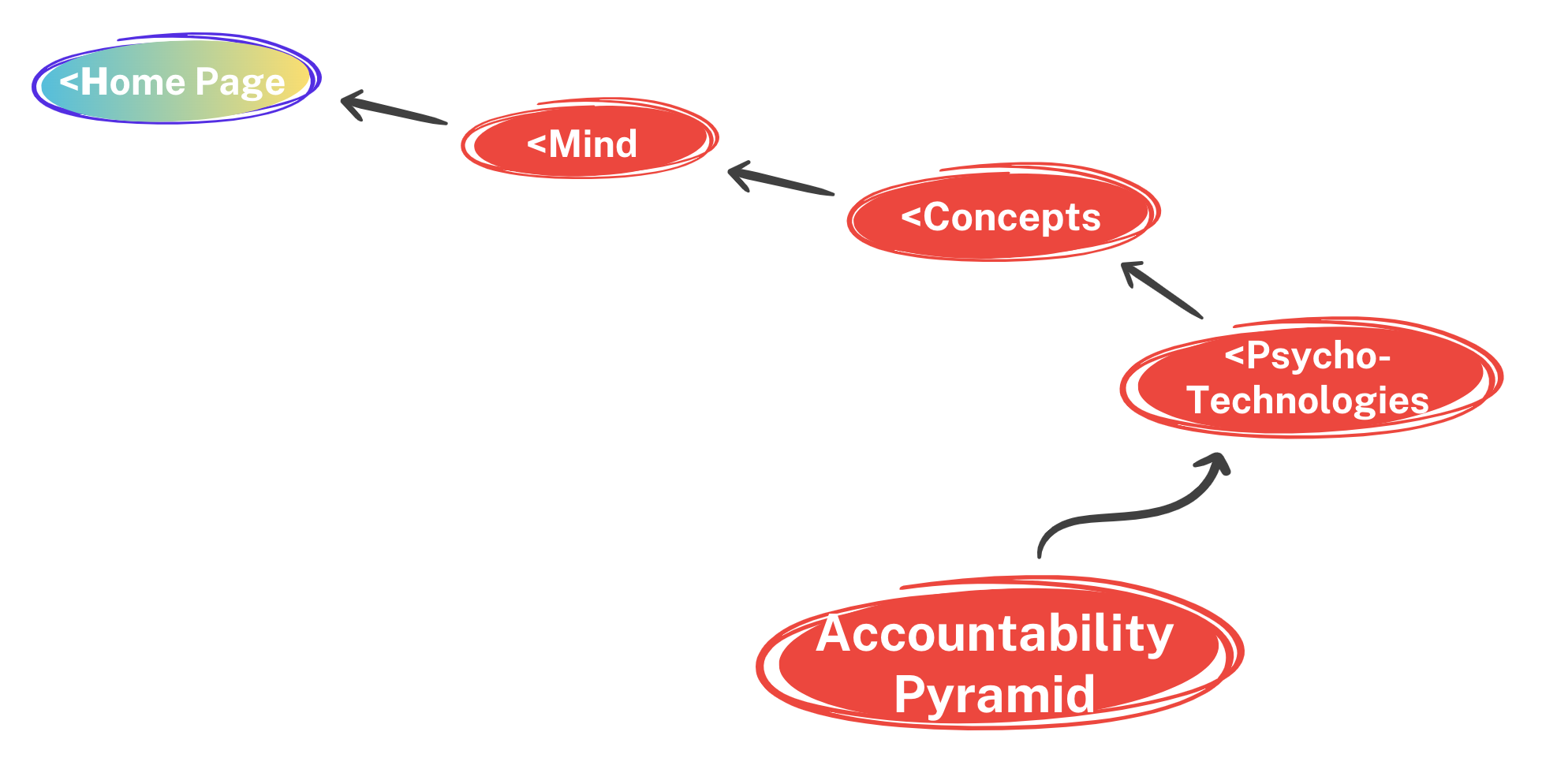

ACCOUNTABILITY PYRAMID
A hierarchy exists involving the degree in which we are accountable. The pyramid below shows the “stepping up” we can do for improving our accountability:

We are more accountable the higher we are up the pyramid. The top step represents being fully accountable. As we find ourselves lower on the pyramid, we are less accountable.
The bottom step is the justification step. This step fully lacks accountability. To justify a reaction is to refuse to be responsible, also known as response-able. A person at this step makes excuses and shows a complete disregard for being accountable. In being late for an appointment, for example, a person at this step may say angrily, “Traffic was insane! You're not perfect, so don't talk to me about being late because it really pisses me off.”
The second step upward is the reaction step. Being response-able in the presence of a reaction requires great effort. To use an excessive amount of energy on a low form of accountability is foolish. That energy could be used for more important things. At this level of accountability, a person who is late may say, “I am working real hard not to get mad at you for giving me crap about being late.”
The third step up the pyramid is the relationship step. We all relate to our perceptions and interpretations. At this step, though, we are unaccountable for what we perceive and interpret. We simply focus on how we relate to what we perceive and interpret. Like the last step, this step brings us no closer to resolution. At this level, we try to have a good relationship to our own faulty viewpoint without even considering that our viewpoint may need work. At this step, we may say, “I hate it that you don't appreciate me. If you did, you wouldn't get mad at me for just being late.”
The fourth step, the interpretation step, is the great leap. This is where we begin to show improvements, and they are great improvements. At this level, we practice responsible interpretation. Energy used at this level supports long-term benefits. At this step, we could say, “Feeling like I have to defend myself is a sign that I have some work to do to get more honest with myself and you. Maybe life is trying to teach me to be more respectful and on time.” The best interpretations provide meaning. They imply that things happen for a reason, that they occur with some form of intelligence or wisdom inherent in them. Responsible interpretations support your ongoing growth process. Although you can still go higher on the accountability pyramid, sometimes this level is the optimal level for growth.
The fifth level up is the perception step. Pure perception is void of any story or interpretation. This is the step of pure perspective that sees an event as just an event. A way to reach this step is with pure honesty, which often means conceding that the event is not about you. A person at this step who is late would simply say, “I am definitely not on time.” (Say, “not on time” instead of “late” because “late” is the problem while “on time” is the solution.) Adding a declaration of solution is a good practice. You can also say, "I'll work on being more punctual." The paradox of this step not being about you and you offering yourself as a solution is fascinating to say the least. Such is the way of pure perception.
The top step is the place for complete accountability. We reach the top step when we let the event be the event, meaning we do not even personalize our perception of it. Going down the pyramid, we are also not personalizing our interpretation of it, our relationship to it, our reaction to it, and our justification for our reactive behavior. Instead, we simply choose to live with more peace and freedom, with more love and joy. Going to the highest place possible, you would still make some type of offering. Maybe your resonance says, "All is well, always has been, always will be." Maybe you offer a two-part apology and say, “I apologize for not being on time, and I promise to be punctual in the future.” Of course, being punctual then becomes an important call to answer. At this step, we set the standard for how we are to live our life. We demonstrate what love would do. This standard of taking full ownership while not personalizing anything becomes a pristinely wise practice and one that brings about the deepest peace available.